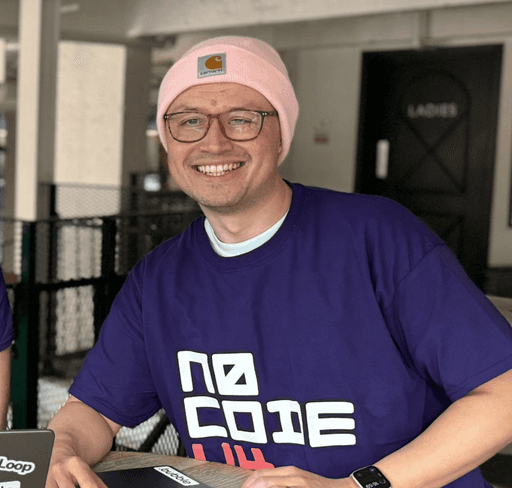Apr 24, 2025
LinkedIn Networking Tips to Build Real Connections
Build lasting LinkedIn connections with practical tips for better outreach, profile optimization, and professional growth.
Making meaningful connections is one of the most powerful things you can do for your career, and LinkedIn is one of the best places to start. With millions of professionals across every industry, it’s more than just a digital resume; it’s a platform built for growing your network, showcasing your expertise, and opening doors. But having a profile alone won’t cut it.
Effective networking on LinkedIn means being intentional with every interaction. It’s not about sending mass requests or pitching right away. It’s about building real relationships that lead to long-term opportunities. Whether you’re trying to connect with mentors, peers, or potential clients, the way you approach those connections can shape your success.
Why Networking on LinkedIn Matters
LinkedIn serves as a powerful platform to connect with professionals across the globe. With over 1 billion users as of 2024, it offers boundless opportunities to expand your professional circle. Networking here can directly impact your career by exposing you to new opportunities, ideas, and collaborations.
A diverse LinkedIn network gives you a competitive edge. By connecting with industry leaders, peers, and potential clients, you not only gain visibility but also establish credibility. A strong network keeps you updated on market trends, job openings, and emerging technologies.
Remote work has amplified LinkedIn’s significance. Traditional face-to-face networking is now supplemented by online interactions, enabling you to reach professionals in any location.
Building relationships here ensures you stay relevant within your industry, regardless of geographic boundaries. Engaging with posts, sharing value-driven content, and cultivating connections transform LinkedIn into an essential career tool.
How to Network With Strangers on LinkedIn?
Connecting with strangers on LinkedIn starts with personalized connection requests. Avoid generic messages by introducing yourself and referencing shared interests, professional achievements, or mutual connections.
This makes your invitation stand out and encourages acceptance. When a direct request isn’t possible, consider using InMail to start the conversation professionally.
A complete and optimized LinkedIn profile builds trust. Highlight your experience, skills, and endorsements to showcase credibility and professional value. Including a professional headshot and relevant keywords improves your discoverability.
Engage actively with content from people you wish to connect with. Comment thoughtfully on their posts, ask insightful questions, or share their content to demonstrate genuine interest and create visibility before sending a request.
Participation in LinkedIn groups and events connects you with professionals who share your interests. Contribute to group discussions or interact during webinars to foster connections.
While building your network, filter contacts by industry or interest. Use LinkedIn’s search and advanced filters to find individuals whose expertise aligns with your goals. Always prioritize meaningful, strategic connections over sheer numbers.
Building an Effective LinkedIn Profile For Networking
Your LinkedIn profile acts as a digital resume and networking tool. Ensure that all sections are complete and reflect a professional image. Begin with a profile picture; profiles with one receive up to 14 times more views. Choose a clean, professional photo to build trust and credibility.
Craft a headline that articulates your role or expertise while utilizing relevant keywords. This improves searchability. In the summary section, highlight your skills, achievements, and goals concisely. Use industry-specific terms to appeal to potential connections or employers.
Include work experience, education, and certifications to add depth. Showcase your expertise by detailing accomplishments instead of listing responsibilities. LinkedIn Learning courses can enhance your profile’s appeal by demonstrating dedication to growth.
Use keywords strategically throughout the profile to increase visibility. Keep everything updated, from your skills section to your latest role. An optimized profile establishes credibility and attracts meaningful connections.
Best Practices for Networking on LinkedIn
Networking on LinkedIn depends on purposeful activities and strategic engagement. Focus on creating connections that foster mutual growth and professional impact.
Personalize Connection Requests
Adding a personal message to your connection request sets your invitation apart. Briefly introduce yourself, mention how you discovered their profile, and explain why you'd like to connect.
For instance, referencing shared interests, mutual connections, or participation in the same LinkedIn event increases the likelihood of acceptance. Avoid generic messages, as they imply a lack of effort and may not engage potential contacts.
Engage With Your Network Through Comments and Posts
Show your interest in your connections' perspectives by commenting on or sharing their posts. Meaningful interactions, such as asking thoughtful questions or offering valuable insights, nurture relationships over time.
Responding to direct messages or mentions also maintains active communication. Engaging in this way boosts visibility within your network and positions you as a valuable community member.
Share Valuable and Relevant Content
Consistently sharing high-quality content that reflects your expertise helps establish your credibility and keeps you top of mind within your network. Focus on posts that educate, inspire, or offer solutions tailored to your audience’s needs. Visuals like infographics, short videos, or carousel posts can make your content more engaging, while hashtags improve its visibility.
Publishing LinkedIn articles or creating posts that speak directly to your industry adds depth to your professional presence. If you're looking to stay consistent and keep your messaging polished, a content tool like Typoro can help you brainstorm, refine, and schedule posts that feel authentic and aligned with your goals.
Join Groups and Participate in Discussions
LinkedIn groups provide a platform to meet like-minded professionals and discuss relevant topics in your field. Search for groups related to your skills or industry, then actively contribute by joining conversations or answering questions.
When you provide insights and add value to these discussions, others are more likely to connect with you and view you as a credible expert.
Attend Virtual Events and Webinars
Participating in LinkedIn-hosted events introduces you to professionals beyond your existing network. Use chat features to introduce yourself, ask engaging questions, and exchange perspectives.
Following the event, send personalized connection requests to attendees or speakers. Mention the event in your message for stronger rapport, then post your takeaways with tags to increase engagement.
Common Mistakes to Avoid
Networking on LinkedIn can open opportunities, but specific errors might sabotage your efforts. Identifying and avoiding these critical mistakes ensures your connections are meaningful and impactful.
Sending Generic or Spammy Messages
Generic messages like "Let’s connect" diminish your chances of building genuine relationships. Personalize connection requests by referencing shared interests or experiences, such as, "I enjoyed your talk on branding at the 2024 Marketing Summit."
Avoid spamming with irrelevant newsletters or overly promotional content. Automated, mass-produced messages can harm your credibility and may result in restricted account access. Quality, tailored communication fosters trust and increases acceptance rates.
Overlooking Profile Optimization
A poorly optimized LinkedIn profile reduces your visibility and credibility. Use a current, professional profile picture, as profiles with one receive 14x more views. Craft a compelling headline that reflects your expertise and includes relevant keywords.
Highlight accomplishments in your work experience section, use the 'About' section to demonstrate versatility, and ensure contact information is accessible. An incomplete profile detracts from your professional persona. A robust, updated profile signals professionalism and facilitates stronger connections.
Ignoring Engagement With Connections
Connections lose value without interaction. Beyond initial contact, engage consistently by commenting thoughtfully on posts, sharing industry-relevant content, and initiating discussions.
Acknowledging milestones like promotions or product launches maintains rapport and positions you as an active participant. Avoid inactivity, as it portrays detachment and reduces visibility. Sustaining engagement strengthens relationships and reinforces your standing within your network.
Conclusion
LinkedIn is more than just a platform for showcasing your resume; it’s a powerful tool for building meaningful professional relationships. By focusing on authenticity, strategic engagement, and a well-optimized profile, you can unlock opportunities that elevate your career.
Approach networking with purpose, and aim to provide value in every interaction. When done consistently, these efforts turn into real opportunities that support long-term success. And if you're looking to stay consistent with your content and improve how you show up, a tool like Typoro can help you write, format, and schedule LinkedIn posts that resonate with your audience.
Start Your 7-Day Free Trial
Experience the full power of Typoro with a 7-day free trial. Create, optimize, and schedule LinkedIn posts effortlessly while tracking your growth. No commitment. Cancel anytime.
Credit card required. Cancel at anytime.









